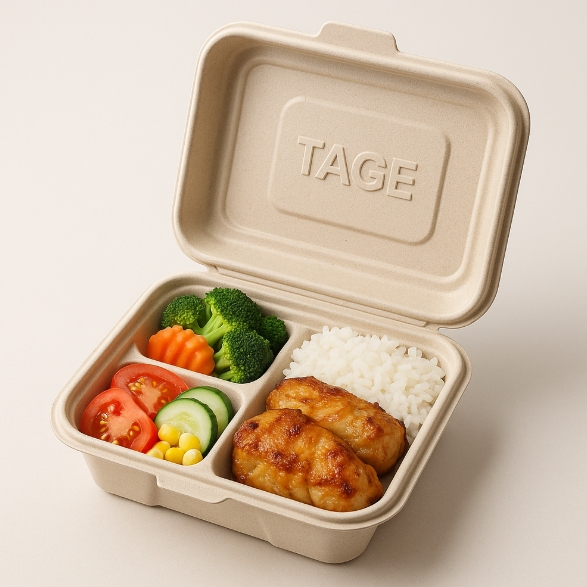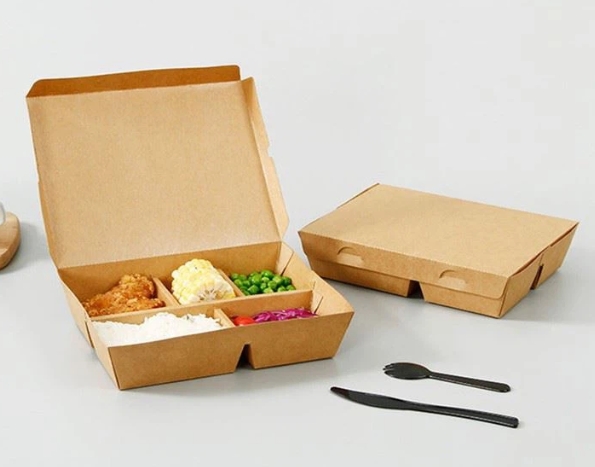
Content Menu
● Understanding Disposable Lunch Box Materials
>> Types of Disposable Lunch Boxes
>> Detailed Overview of Disposable Lunch Box Materials
>>> Plastic Types and Their Microwave Safety
>>> Paperboard and Compostable Containers
>>> Foam Containers
● How to Identify Microwave-Safe Disposable Lunch Boxes
>> Look for Microwave-Safe Symbols and Labels
>> Check the Material Type
>> Avoid Containers Without Labels
● The Science Behind Melting and Chemical Release
>> Melting Points and Heat Resistance
>> Chemical Leaching
● Best Practices for Microwaving Disposable Lunch Boxes
>> 1. Always Check for Microwave-Safe Labeling
>> 2. Remove Lids and Metal Components
>> 3. Avoid Overheating and Prolonged Use
>> 4. Use Lower Power Settings
>> 5. Never Microwave Damaged or Colored Plastics
● Additional Safety Tips
>> Avoid Microwaving with Lids On
>> Monitor Fatty/Sugary Foods
>> Never Use Aluminum Foil or Non-Safe Wraps
● What Happens If You Microwave the Wrong Container?
● Environmental Impact and Disposal
>> The Plastic Waste Crisis
>> Recycling and Composting Tips
● Innovations in Microwave-Safe Disposable Lunch Boxes
>> Biodegradable Options
>> Reusable Alternatives
● Conclusion
● FAQ: Microwave Lunch Box Disposable Safety
>> 1. How can I tell if my disposable lunch box is microwave-safe?
>> 2. Can I microwave compostable fiber containers?
>> 3. Why do some paper containers spark in microwaves?
>> 4. Are black plastic lunch boxes safe?
>> 5. How do I dispose of melted plastic in my microwave?
Microwaving food in a disposable lunch box is a daily convenience for many, especially for office workers, students, and anyone relying on takeout or meal prep. However, the question remains: Can you microwave a disposable lunch box without melting it? The answer depends on the type of material, the presence of safety certifications, and how you use the container. This comprehensive guide will help you understand the science, safety, and best practices for microwaving disposable lunch boxes while exploring environmental impacts and innovative alternatives.

Understanding Disposable Lunch Box Materials
Types of Disposable Lunch Boxes
Disposable lunch boxes come in several materials, each with unique properties:
- Plastic (various types, including PP, PET, PS, and more)
- Paperboard or Cardboard (often with coatings)
- Compostable fiber-based containers
- Foam (Styrofoam or polystyrene)
The key to safe microwaving lies in identifying which of these materials can withstand microwave heat without melting or releasing harmful chemicals.
Detailed Overview of Disposable Lunch Box Materials
Plastic Types and Their Microwave Safety
Polypropylene (PP) is widely regarded as the safest plastic for microwaving due to its high melting point (around 167°C) and chemical stability. It resists warping under typical microwave conditions. In contrast, polyethylene terephthalate (PET) and polystyrene (PS) are less heat-resistant. PET, used in salad containers and drink bottles, can deform or melt when microwaved. Polystyrene (Styrofoam) melts quickly and releases toxic fumes.
Paperboard and Compostable Containers
Paperboard containers often have plastic or wax coatings to prevent leaks. While many are microwave-safe, some coatings may degrade under heat. Compostable fiber-based containers made from sugarcane bagasse or bamboo fiber are eco-friendly alternatives but require careful adherence to heating instructions.
Foam Containers
Polystyrene foam containers are lightweight but highly unsafe for microwaving. They contribute significantly to environmental pollution and take centuries to decompose.
How to Identify Microwave-Safe Disposable Lunch Boxes
Look for Microwave-Safe Symbols and Labels
Check for a microwave-safe symbol (wavy lines) or explicit labeling on the container. Certified containers undergo rigorous testing to ensure safety.
Check the Material Type
- Polypropylene (PP, #5): The gold standard for microwave-safe disposable lunch boxes.
- CPET: Heat-resistant plastic used in premium meal containers.
- PET (#1) and PS (#6): Avoid these materials entirely.
Avoid Containers Without Labels
Unlabeled plastics may contain recycled or mixed materials that behave unpredictably under heat.
The Science Behind Melting and Chemical Release
Melting Points and Heat Resistance
While PP withstands temperatures up to 167°C, microwave heating rarely exceeds 100°C. However, oily or fatty foods can locally exceed safe limits, causing warping.
Chemical Leaching
Non-microwave-safe plastics may release BPA, phthalates, or plasticizers. Always prioritize certified containers to minimize health risks.
Best Practices for Microwaving Disposable Lunch Boxes
1. Always Check for Microwave-Safe Labeling
Transfer food to glass or ceramic if labels are missing.
2. Remove Lids and Metal Components
Plastic lids often use different materials. Remove them to prevent melting.
3. Avoid Overheating and Prolonged Use
Heat food in 1-2 minute intervals, stirring between cycles.
4. Use Lower Power Settings
Reduce power to 50-70% for gentler heating.
5. Never Microwave Damaged or Colored Plastics
Scratches or dyes may indicate unsafe additives.
Additional Safety Tips
Avoid Microwaving with Lids On
Trapped steam can rupture containers. Use microwave-safe vented covers instead.
Monitor Fatty/Sugary Foods
These reach higher temperatures-transfer to glass for safer heating.
Never Use Aluminum Foil or Non-Safe Wraps
They can spark or melt, creating fire hazards.

What Happens If You Microwave the Wrong Container?
- Melting/Warping: Ruined meals and damaged microwaves.
- Toxic Leaching: Long-term health risks from chemical exposure.
- Fire Risks: Metal components or adhesives may ignite.
Environmental Impact and Disposal
The Plastic Waste Crisis
Disposable lunch boxes contribute to 14% of global plastic waste. Polystyrene foam persists in landfills for 500+ years.
Recycling and Composting Tips
- Rinse PP containers (#5) before recycling.
- Compost sugarcane/bamboo containers in industrial facilities.
- Avoid "wish-cycling" non-recyclable plastics.
Innovations in Microwave-Safe Disposable Lunch Boxes
Biodegradable Options
Cornstarch and wheat bran containers decompose within 90 days in commercial composters.
Reusable Alternatives
- Silicone Lunch Boxes: Foldable, lightweight, and oven-safe.
- Smart Containers: Temperature-controlled designs with built-in heating elements.
Conclusion
Microwaving a disposable lunch box without melting it requires careful material selection and usage habits. Prioritize PP (#5) or CPET containers with clear safety labels, avoid PET/Styrofoam, and never microwave unmarked plastics. For frequent users, switching to reusable glass or silicone containers reduces environmental harm while ensuring safety. As biodegradable technologies advance, eco-friendly disposable options are becoming more accessible, offering convenience without compromising health or sustainability.

FAQ: Microwave Lunch Box Disposable Safety
1. How can I tell if my disposable lunch box is microwave-safe?
Look for the microwave symbol (wavy lines) or recycling code #5 on the container.
2. Can I microwave compostable fiber containers?
Yes, but follow manufacturer guidelines and avoid overheating.
3. Why do some paper containers spark in microwaves?
Metal coatings or adhesives in lids/linings cause arcing. Remove lids before heating.
4. Are black plastic lunch boxes safe?
Avoid colored plastics-dyes often contain recycled materials with unknown additives.
5. How do I dispose of melted plastic in my microwave?
Unplug the microwave, let it cool, then scrub with baking soda paste. Replace heavily damaged units.

















